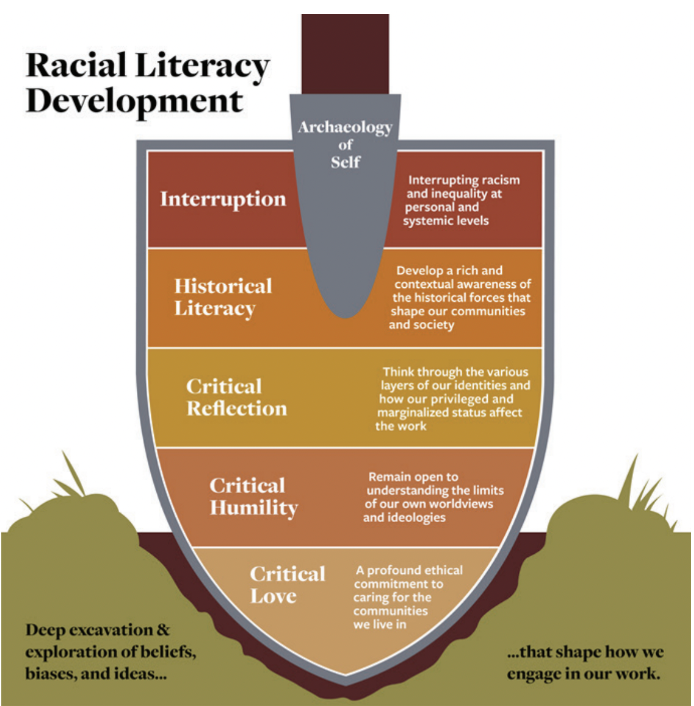What does it mean to be truly vulnerable? In what ways can vulnerability be demonstrated and shared in our classrooms to support students in their educational and emotional development? This was the question that I wanted to explore when organizing my first keynote event at the Center for Publishing and Applied Liberal Arts (PALA): Embracing Every Hue: Liberating Imposter Syndrome, Intersectionality, & Borders Through Storytelling. I invited BIPOC poets Kyle Liang, R.A. Villanueva, and poet/translator Tiffany Troy to speak on how poetry specifically has been a form that allows for true expression.
Many students struggle with issues such as anxiety, grief, imposter syndrome, and low self-esteem. Those students, especially BIPOC/students of color, may have never been in a space that felt safe to share their stories, unapologetically, without feeling judged. Many feel that they lack a place of belonging. As a first-generation college student who put himself through college, these were all feelings that I grappled with for over a decade, especially when I began my journey as a PhD student.
Taking time to reflect and also challenge myself and those around me, I began to imagine a world where joy is cultivated in shared spaces using storytelling as a vessel for experiencing radical love. I coined the phrase “embracing every hue” to encompass this vision. A part of allowing space for true expression is critically reflecting on the “various layers of our identities,” including our experiences, statues, and ideologies (Sealey-Ruiz, 2020). At the root of this work is allowing ourselves to be vulnerable for acknowledging our “emotions equal freedom, because you can’t control when a certain emotion washes over you or rises up, within you.” (Phelps, 2023)
Poetry has the ability to aid writers of all backgrounds in finding both their voices and community in various forms. Personally, it has assisted me to find liberation through excavating things that have oppressed me and introduced me to like-minded individuals who have similar experiences. Bringing this work to our keynote event, I asked these three special poets to answer the question: “What comes to mind when you hear the phrase ‘Embracing Every Hue?’”
Poet-translator Tiffany Troy, began by stating “When we speak of embracing every hue, my version of embracing every hue exists less in response to people who will never accept me than in achieving communion with a world filled with people who love me, through the emotional landscape of the excitement of the everyday beauties in a Burger King Double Whopper (ordered through an app in true millennial style), which is as much a meal as an attempt to assimilate, to belong, even if that means shedding and losing parts of myself to accept myself for who I was.”
Next, Kyle Liang, poet and physician assistant at Weill Cornell Medicine, looked at the question from the angle of what it means to embrace oneself and the world. For Kyle, embracing every hue meant “building community, and founding a connection built on loving each other and appreciating our differences, no matter where we come from.”
Finally, R.A. Villanueva, poet-educator and NYU alum (GSAS '08) shared that the phrase for him is “Both beautiful and terrifying. As storytellers as writers as people, we have memories, griefs, and joys–all a part of our individual DNA, in the sense of our values, psychologies, etc. To embrace all of that is to welcome in awe and happiness, but also risk and fear. In our art, teaching, and interpersonal relationships, we do learn how to both embrace and reckon with the fact that there is diversity, difference, and an illuminating array of perspectives around us. All deserving to be amplified.”
Too often in spaces both institutional and elsewhere, we can be made to feel like we don’t belong, that our voices don’t matter–and in many ways we find ourselves punished for dreaming beyond borders. A highlight of the event was how open and honest the guest speakers were about their difficulties, acknowledging how suffering from imposter syndrome is a common experience, especially as a person of color.
Another area of emphasis for all three speakers was how poetry allows them to use language in honest ways to express themselves, excavate what lies beneath the surface, and liberate themselves through freedom of expression. An icon and inspiration to us all, the late Audre Lorde (1985) stated “... poetry is not a luxury. It is a vital necessity of our existence. It forms the quality of the light within which we predicate our hopes and dreams toward survival and change, first made into language, then into ideas, and then into more tangible action. Poetry is the way we help give a name to the nameless so it can be thought. The farthest horizons of our hopes and fears are cobbled by our poems, carved from the rock experiences of our daily lives.”
Storytelling is powerful, and when we open up ourselves and share pieces of ourselves as educators, higher educational professionals, and most importantly, as people, we are setting the stage for our students to do the same. Inspired by the three invited poets and echoing the sentiments of Dr. Sealey-Ruiz, it is my belief that if we continue to let our guard down and use narratives to amplify our respective voices, we can create spaces rooted in critical humility and critical love.

